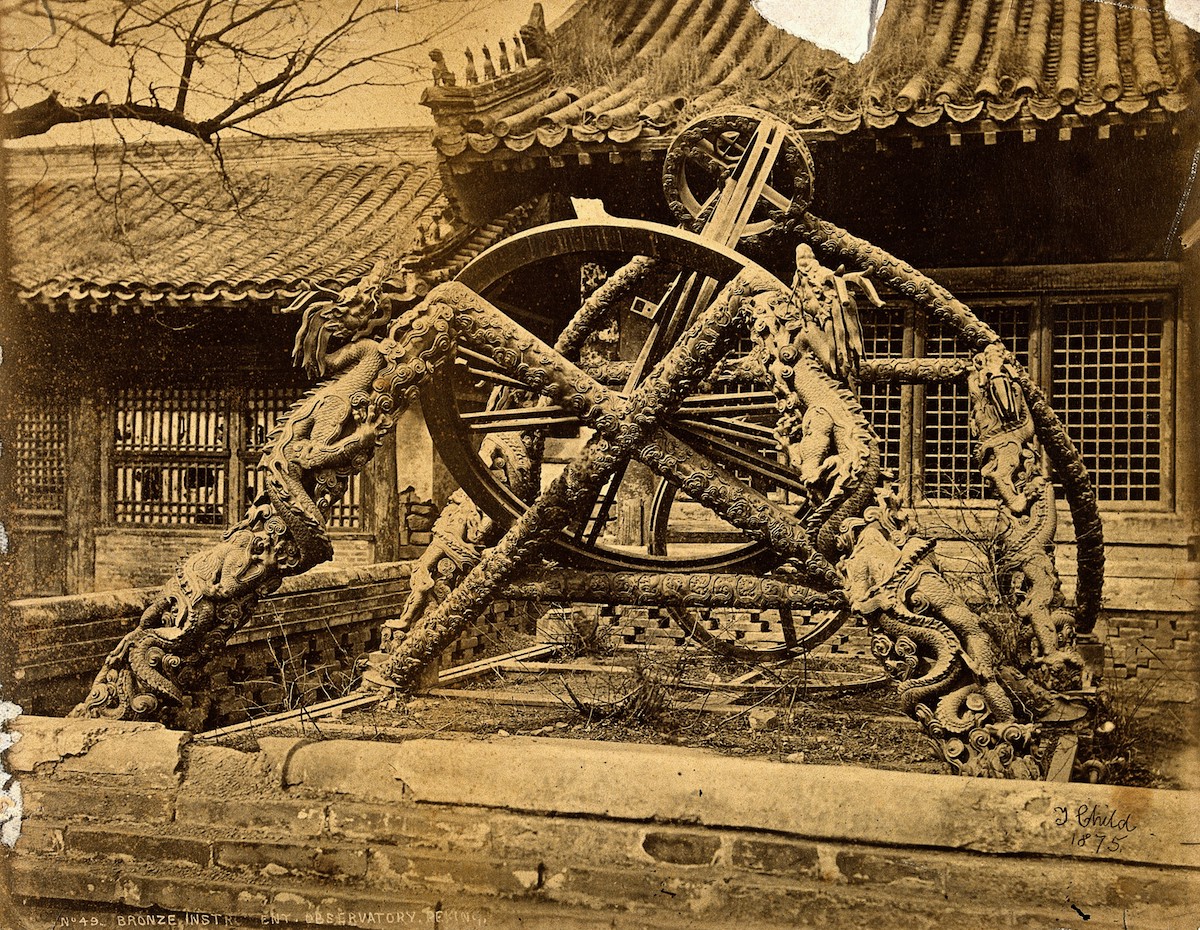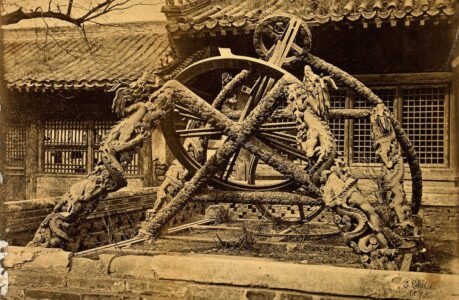Astronomy has played a significant role in Chinese culture since ancient times. From the earliest observations of celestial phenomena to the latest discoveries in modern astronomy, Chinese astronomers have made important contributions to our understanding of the universe. In this essay, we will explore the rich and fascinating history of Chinese astronomy, tracing its evolution from its earliest beginnings to the present day.
The Early History of Chinese Astronomy
The history of Chinese astronomy dates back over 4,000 years to the Shang Dynasty (1600-1046 BCE). During this time, the Chinese observed the sun, moon, and stars and began to develop a system for tracking the movements of celestial objects. They also used astronomical observations to develop a calendar, which was used to determine the timing of important agricultural events and religious ceremonies.
The Zhou Dynasty (1046-256 BCE) saw further advances in Chinese astronomy, as astronomers began to record observations of celestial events in detail. They recorded eclipses, comets, and meteor showers, and used these observations to develop a more accurate calendar. The Zhou also developed a system for tracking the movements of the stars, which they used to determine the positions of the constellations.
During the Warring States period (475-221 BCE), Chinese astronomers made significant progress in developing astronomical instruments. They built observation towers, which were used to observe the stars and track their movements, and developed a system for measuring the altitude of celestial objects using a device called the gnomon.
The Han Dynasty (206 BCE – 220 CE) saw even greater advances in Chinese astronomy. The Han astronomers developed a more sophisticated calendar, which was based on the movements of the sun and moon. They also developed a system for predicting eclipses and used astronomical observations to improve their understanding of the cosmos.
The Tang and Song Dynasties
The Tang Dynasty (618-907 CE) was a golden age for Chinese astronomy. Tang astronomers made significant contributions to the study of astronomy, including the development of a system for predicting eclipses and the invention of the armillary sphere, a device used to track the movements of the stars.
During the Song Dynasty (960-1279 CE), Chinese astronomy continued to flourish. Song astronomers developed a system for measuring the position of celestial objects using a device called the quadrant, and they made significant advances in the study of comets and meteor showers.
One of the most famous astronomers of the Song Dynasty was Shen Kuo (1031-1095 CE). Shen was a polymath who made significant contributions to many fields, including astronomy, mathematics, and geology. He was the first to describe the concept of true north, and he also made important observations of the moon and stars.
The Yuan and Ming Dynasties
During the Yuan Dynasty (1279-1368 CE), Chinese astronomy was heavily influenced by Islamic astronomy, which had been brought to China by Muslim scholars. Yuan astronomers made significant advances in the study of trigonometry and used their knowledge to develop more sophisticated astronomical instruments.
The Ming Dynasty (1368-1644 CE) saw the construction of some of the most impressive astronomical instruments in Chinese history. The most famous of these was the giant gnomon, which was built by the astronomer Guo Shoujing (1231-1316 CE). The giant gnomon was a massive stone sundial that measured over 36 metres in length, and it was used to measure the length of the year with remarkable accuracy
Yuan Dynasty (1279-1368 CE)
During the Yuan Dynasty, Chinese astronomy was heavily influenced by Islamic astronomy, which had been brought to China by Muslim scholars. The Yuan astronomers made significant advances in the study of trigonometry and used their knowledge to develop more sophisticated astronomical instruments. They also adopted the Islamic practice of using astronomical tables to predict the positions of the planets and stars.
One of the most notable astronomers of the Yuan Dynasty was Guo Shoujing (1231-1316 CE). Guo was a brilliant mathematician and astronomer who made significant contributions to the study of celestial mechanics. He developed a more accurate method for predicting eclipses and developed a system for measuring the length of the year with remarkable accuracy.
Guo is also famous for his construction of the giant gnomon, which was a massive stone sundial that measured over 36 metres in length. The giant gnomon was used to measure the length of the year and helped the Yuan astronomers to make more accurate observations of the sun and stars.
Ming Dynasty (1368-1644 CE)
The Ming Dynasty marked a golden age for Chinese astronomy. During this period, Chinese astronomers made significant advances in the study of comets, meteor showers, and other celestial phenomena. They also constructed some of the most impressive astronomical instruments in Chinese history.
One of the most famous Ming astronomers was Zhang Heng (1572-1644 CE). Zhang was a brilliant mathematician and astronomer who made significant contributions to the study of celestial mechanics. He developed a more accurate method for predicting the positions of the planets and stars and was the first to describe the concept of the precession of the equinoxes.
Another notable astronomer of the Ming Dynasty was Guo Shuangyi (1562-1620 CE). Guo was an expert in the study of comets and made significant contributions to our understanding of these celestial objects. He observed several comets and recorded detailed observations of their movements and characteristics.
The Ming astronomers also constructed some of the most impressive astronomical instruments in Chinese history. One of the most famous of these was the large celestial globe, which was a massive bronze sphere that measured over 2 metres in diameter. The globe was used to represent the positions of the stars and planets and was used to make more accurate observations of the celestial objects.
The Influence of Chinese Astronomy on Science and Culture
Chinese astronomy has had a profound impact on science and culture throughout history. The study of the cosmos played an important role in many aspects of Chinese society, including religion, agriculture, and government.
The Chinese calendar, which was developed based on astronomical observations, played a central role in Chinese society. The calendar was used to determine the timing of important agricultural events, such as planting and harvesting, and also played a key role in the celebration of religious holidays and festivals.
Chinese astronomy also played an important role in the development of science and technology. Chinese astronomers made significant contributions to the study of celestial mechanics, and their observations of the sun and stars helped to advance our understanding of the cosmos.
In addition, Chinese astronomy had a significant influence on other cultures. Chinese astronomical knowledge was transmitted to other countries, including Korea, Japan, and Vietnam, and helped to shape the development of astronomy in these regions.
Conclusion
In conclusion, the history of Chinese astronomy is a testament to the ingenuity and dedication of the Chinese people throughout history. Chinese astronomers have made significant contributions to our understanding of the universe, developing sophisticated astronomical instruments, making accurate observations of celestial phenomena, and advancing our knowledge of celestial mechanics.
The study of the cosmos played a central role in Chinese society, influencing everything from religion to agriculture to government. The Chinese calendar, based on astronomical observations, played an important role in determining the timing of important events and festivals.
The impact of Chinese astronomy on science and culture has been significant, with Chinese astronomical knowledge transmitted to other countries and helping to shape the development of astronomy in other regions. The history of Chinese astronomy is a fascinating story of human curiosity, scientific inquiry, and cultural exchange.
Key chinese discoveries
Chinese astronomers and scientists have made numerous discoveries and advancements in the field of astronomy throughout their long history. Here are some of the key discoveries and advancements in Chinese astronomy:
- The invention of the armillary sphere: The armillary sphere is an astronomical instrument that was invented by Chinese astronomers during the Tang Dynasty (618-907 CE). The device was used to track the movements of the stars and planets.
- The use of the gnomon: The gnomon is a device that was used by Chinese astronomers to measure the altitude of celestial objects. The gnomon was first used during the Warring States period (475-221 BCE).
- The development of a more accurate calendar: Chinese astronomers have developed a sophisticated calendar system based on astronomical observations. The calendar was used to determine the timing of important agricultural events and religious ceremonies.
- The prediction of eclipses: Chinese astronomers were able to predict eclipses with remarkable accuracy. They developed a system for predicting solar and lunar eclipses using astronomical observations.
- The study of comets and meteor showers: Chinese astronomers made significant contributions to the study of comets and meteor showers. They recorded detailed observations of these celestial objects and used their observations to develop a better understanding of their characteristics and movements.
- The concept of true north: Shen Kuo, a famous Chinese astronomer and polymath, was the first to describe the concept of true north. He developed a method for determining true north using a magnetic needle.
- The construction of astronomical instruments: Chinese astronomers constructed some of the most impressive astronomical instruments in history, including the giant gnomon, the large celestial globe, and the armillary sphere.
These discoveries and advancements in Chinese astronomy have helped to shape our understanding of the cosmos and have had a significant impact on science and culture throughout history.

